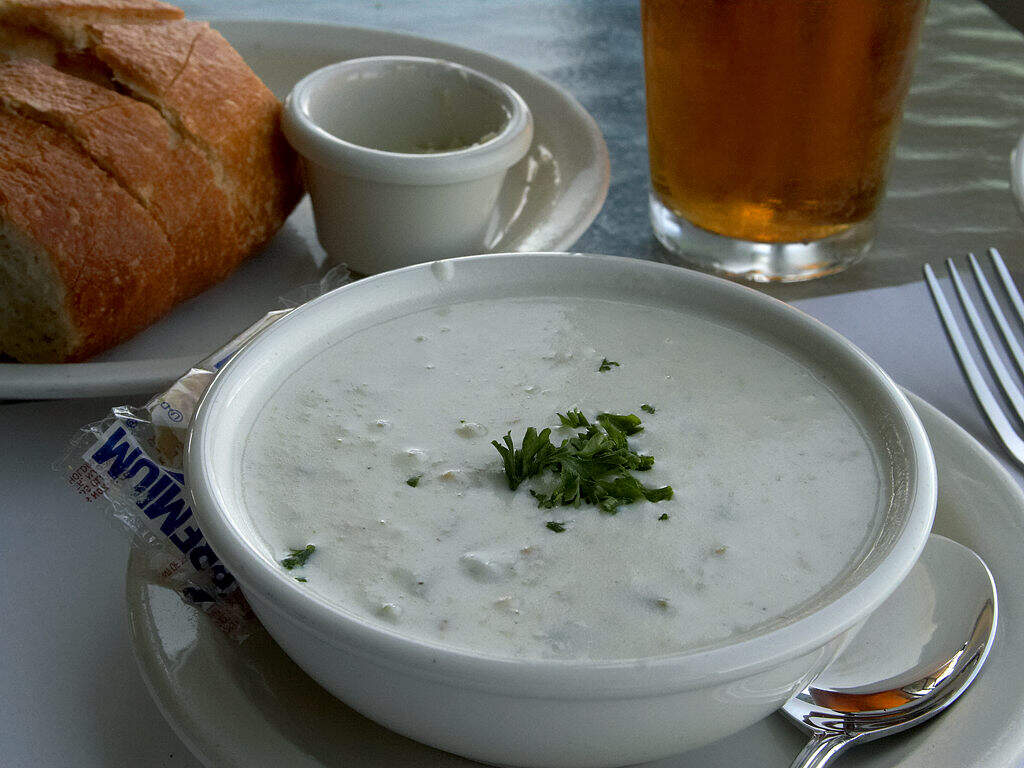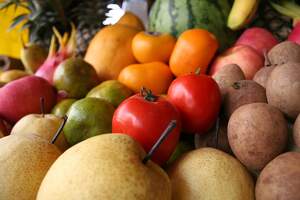

National Clam Chowder Day
Observed
annually on February 25th
Dates
Tags
Food & Drink
Hashtags
Sources
https://en.wikipedia.org/wiki/Clam_chowder
https://www.cooksinfo.com/clam-chowder-day
https://www.ctinsider.com/living/food/article/connecticut-national-clam-chowder-day-restaurants-17781949.php
https://www.eater.com/2016/1/31/10810568/clam-chowder-manhattan-hatteras-new-england-rhode-island-minorcan-new-jersey
https://www.facebook.com/boudin/posts/360374466678
https://www.happeningsmagazinepa.com/2023/01/30/national-clam-chowder-day/
https://www.anrdoezrs.net/links/100298379/type/dlg/https://www.newspapers.com/image/96467393
Chowder is defined by Merriam-Webster as "a soup or stew of seafood (such as clams or fish) usually made with milk or tomatoes, salt pork, onions, and other vegetables (such as potatoes)." Clam is the most widespread type of chowder, and likely started being made because of the relative ease it took to harvest clams. There are several regional variations of clam chowder, all being endemic to coastal areas. Manhattan, New England, and Rhode Island are the most common types, with others being Delaware, Hatteras Island, Long Island, Minorcan, New Jersey, Puget Sound, Rocky Point, San Francisco, and Cabo. Clam chowder is celebrated, cooked, and enjoyed today with National Clam Chowder Day!
New England clam chowder has a creamy base made of heavy cream, light cream, or whole milk. Potatoes, onions, and celery are common ingredients, as are bacon, bacon drippings, or salt pork. The chowder is sometimes accompanied by oyster crackers, which may be crushed and added to thicken it. New England clam chowder was introduced to colonial America by settlers from Nova Scotia—or perhaps by the French or British—and was common in the New England region by the 1700s. It was being served at Ye Olde Union Oyster House in Boston by 1836, and it was referenced in Herman Melville's Moby Dick, published in 1851. Today New England clam chowder is found all over the United States, but is still most popular in the Northeast, particularly in Maine and Massachusetts. It also often accompanies Friday night fish frys in Wisconsin.
Manhattan clam chowder has no cream and instead has a tomato broth base made with tomatoes and tomato paste. It's a bit spicy and is a lot thinner than its New England counterpart. It contains clams, potatoes, and spices such as thyme. It may have other vegetables like carrots, onions, celery, garlic, and bacon. Manhattan clam chowder likely originated in the mid-1800s in the Portuguese fishing communities of Rhode Island, who were not only known for making tomato-based stews, but for traveling to Fulton Fish Market in New York City. The first printed clam chowder recipe with tomatoes and no milk dates to 1890, appearing in The Delmonico Cook Book simply as "clam chowder." The first printed recipes with the name Manhattan clam chowder appeared in Victor Hirtzler's Hotel St. Francis Cookbook in 1919 and in Soups and Sauces in 1934. Not everyone was happy about Manhattan clam chowder, seeing it as an insult to the New England variation, and in 1936 officials in Maine even tried to pass a law to ban tomatoes in chowder.
Rhode Island clam chowder has a clear broth made with clam juice. It regularly uses quahogs, large clams that may weigh as much as three pounds. There also is a less common red version, called Rocky Point, named as such because it was an item on the Rocky Point Amusement Park Shore Dinner Hall since its opening in 1847, which uses tomato purée or sauce.
New Jersey clam chowder resembles Manhattan chowder, with light cream, clams, tomatoes, creamed asparagus, bacon, and seasonings such as parsley, Old Bay Seasoning, and celery powder. Minorcan clam chowder, a signature dish of St. Augustine, Florida, has a tomato base like Manhattan chowder but also has datil pepper, a spicy pepper native to Cuba. The name is a reference to Florida settlers from the Spanish island of Minorca, located in the Mediterranean, who made chowder in a way similar to how they made soup on their home island but used ingredients found in Florida.
The ingredients in Hatteras Island clam chowder, which often includes small and sweet littleneck clams, are cooked in clam juice diluted with water—there is no cream or tomatoes. Salt and pepper are traditionally the only seasonings. New England clam chowder served in sourdough bread bowls is known as San Francisco clam chowder. Cabo clam chowder, from the Baja California peninsula, is made with clams, jalapeños, and other peppers, corn, black beans, garlic, cilantro, cumin, and lime. Chipotle hot sauce is added, and it is garnished with tortilla strips. With so many variations of clam chowder, there is much to celebrate and enjoy on National Clam Chowder Day!
How to Observe National Clam Chowder Day
Have clam chowder at a restaurant or another establishment, or make it at home. Some restaurants have offered specials on the day, such as buy one, get one free chowder bread bowls, and charities have given out free clam chowder. You could have it at a nearby restaurant, but if you can travel, perhaps you could have it at a restaurant known for serving it, such as the Union Oyster House. If you live on the coast, you could even gather your own clams for homemade chowder. You could serve your chowder in a bread bowl, or have it with oyster crackers. Try your hand at one of these recipes:
- New England clam chowder
- Manhattan clam chowder
- Rhode Island clam chowder
- Rocky Point clam chowder
- Cabo clam chowder
- Hatteras Island clam chowder
- New Jersey clam chowder
- Minorcan clam chowder
- Long Island clam chowder





















